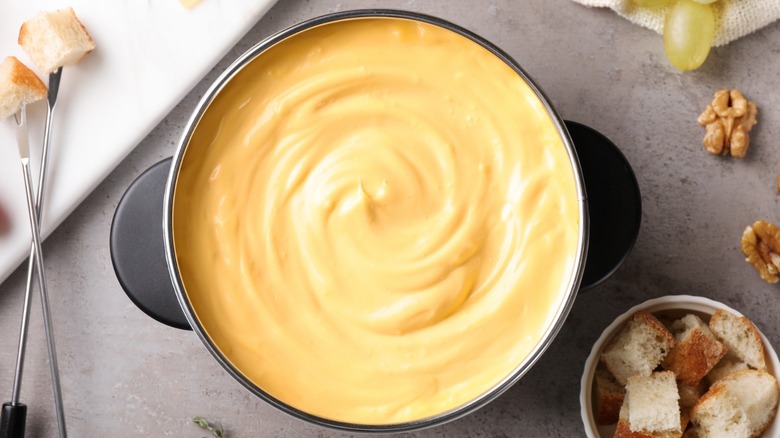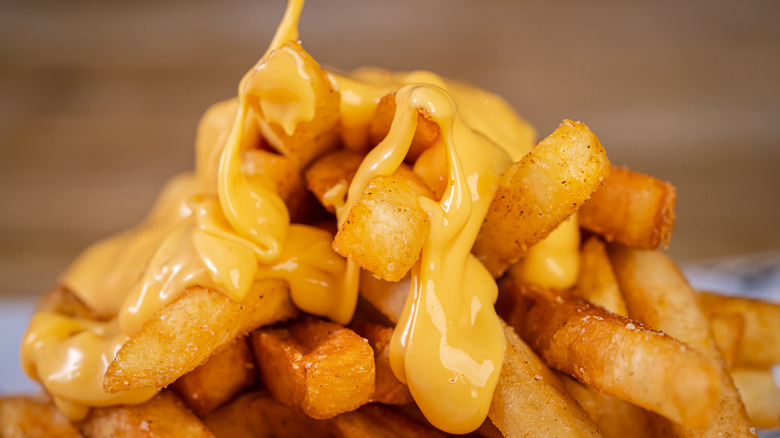The Ratio Mistake You Might Be Making With Cheese Sauce
The perfection of cheese really is unrivaled — it's just so magnificently crafted. The golden pools of dripping fondue bring the pleasure of melted sunshine into every mouthful; the glowing veins of blue cheese alert the intrigue of a bite of Frankenstein's monster. Even mundane cheddar has a place in the hearts of the overly cautious.
The unrivaled beauty of cheese is only part of its attractiveness — the glutamate acid, plenty of fat, and even the biological desire to try out new flavors regardless of their unpleasant-smelling sources all make cheese an irresistible snack. They also go some way to explaining why the popularity of cheese has soared over past decades, doubling in demand since 1979, notes USDA data. At this rate, cheese could soon dominate the world.
Because it's clearly so alluring, it's easy to get carried away by the thrills of cheese. However, some cheese dishes, such as cheese sauce, are actually rather sensitive to the types and quantity of cheese being used. So, if you can control your cheese enthusiasm for just a moment, we'll show you how to get your cheese sauce ratios exactly right.
Don't fear variety when making cheese sauce
Despite its straightforward makeup, a cheese sauce recipe arguably isn't the easiest to get right — if there's even slightly too little stirring, your sauce could end up welded to the bottom of the pan, which wouldn't even be appetizing to an arsonist. The dish is also a little more complicated than you may think: In order to achieve optimum results, you should be using more than one variety of cheese.
Young cheeses create a smooth texture but lack flavor, whereas aged cheeses pack taste but stretch when heated rather than fully melt. Therefore, in order to create a flavorful and tasty cheese sauce, consider mixing youthful cheeses like mozzarella, feta, and goat with mature cheeses such as blue, cheddar, and parmesan. Ideally, aim for two parts aged cheese to one part young.
Mature cheeses can be particularly problematic under heat. As well as turning rubbery, they are also responsible for the lumps you can sometimes find when making cheese sauce, which are caused by proteins destabilizing.

